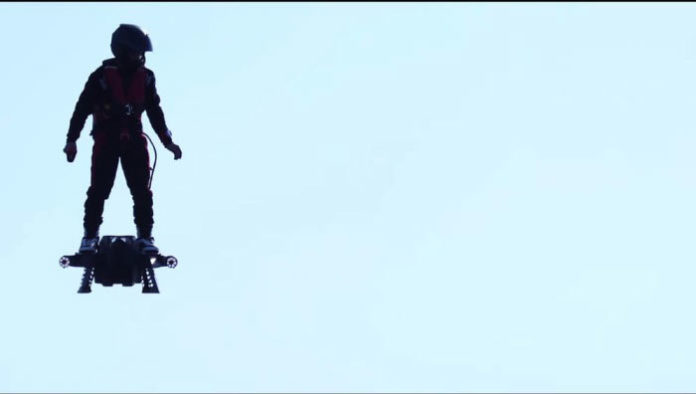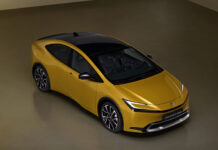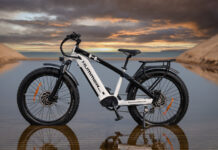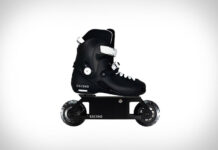Many dream of flyboards or hoverboards, which were shown in the movie “Back to the Future.” The first step towards this dream was made by Frenchman Franky Zapata, who invented a flyboard, which has become a popular entertainment today.
The inventor decided to continue and released the first video, in which he showed his new device – real Flyboard Air, which does not need a hose to take water from the pond, over which the athlete can hover. A gas turbine engine is able to lift the board to a maximum height of 3 kilometers, but the fuel supply is enough only for 10 minutes.
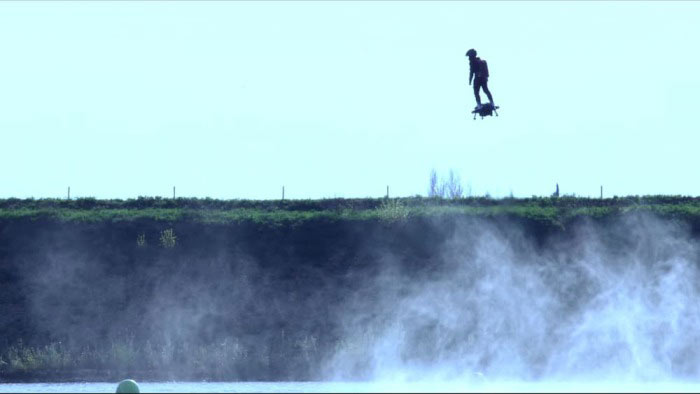
The Frenchman, who used to be a world champion in riding a watercraft, stunned the world in 2011 by releasing a flyboard, a reactive platform, tied to a watercraft. The traction of a water jet, escaping from under the athlete’s feet, was enough to lift the daredevil to the height of 9 meters and perform all kinds of aerobatics.
The simple and funny flyboard very quickly became one of the most popular ways of entertainment on water. It is worth noting that flying this way is quite difficult – you need to be in good physical shape.
It turned out that the flyboard was only a stepping stone to something far greater. Zapata has released the first video of his latest invention: Flyboard Air. A watercraft, a hose and a tether are no longer needed. Instead of a jet of water, the jet stream from a gas turbine engine is now used. The fuel is stored in a backpack on the athlete’s back.
In a test flight video, the Frenchman reaches the height of 30 meters to immediately break the gadget flight record of the Multicopter. Zapata says that test flights will be carried out over water reservoirs, which will help the athlete survive in case of an engine failure.
Detailed specifications have not been published yet. There were only the following figures: the maximum height the flyboard can reach is 3048 m, the maximum flight duration is 10 minutes, and the maximum flight speed near the ground is 150 km/h.

